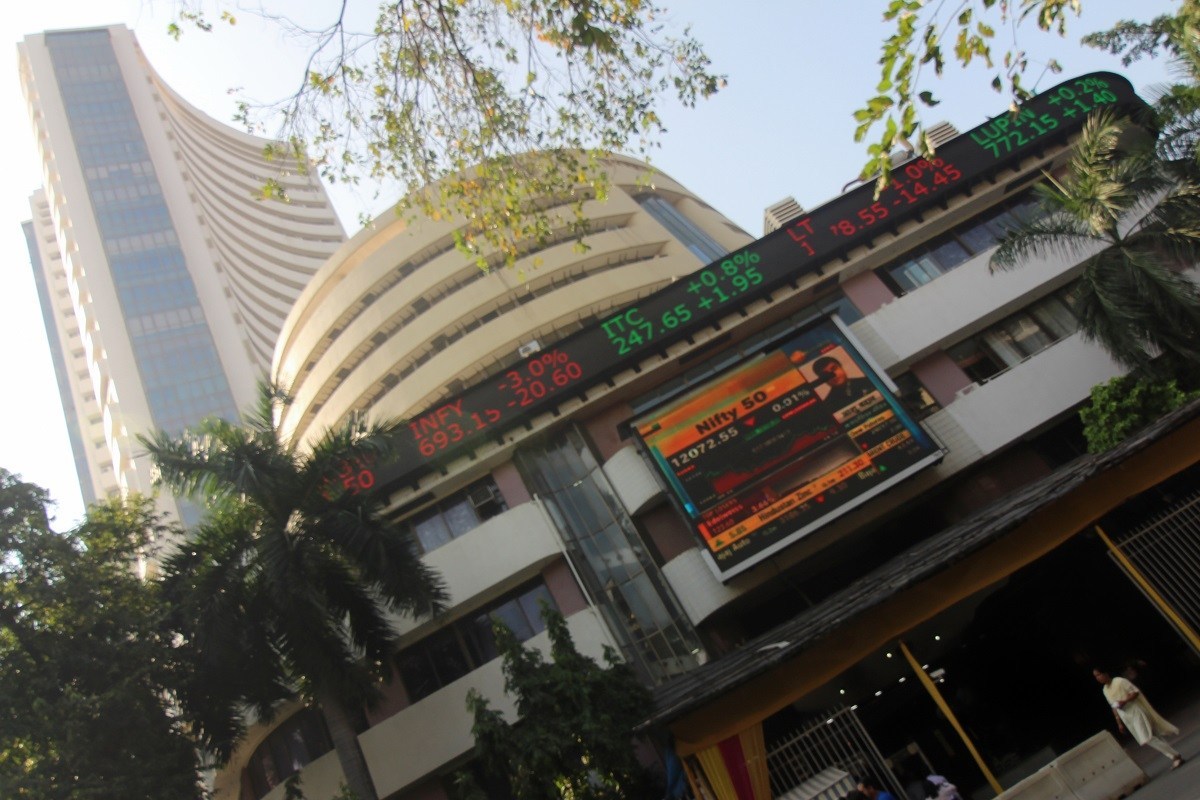[ad_1]
If stock market indices are any barometer, India is not only well poised to rebound but is already doing very well.
The 30-stock benchmark Sensex index of the Bombay Stock Exchange, Asia’s oldest stock exchange, has doubled from a pandemic-triggered plunge in March last year, even as the central bank expects the economy to contract 7.5% in the year ending March 31.
A key element buoying Indian stocks, besides a surge of cheap global funds finding its way into depressed stocks, is India’s remarkable success in controlling Covid-19.
India has brought down the number of daily cases, fatalities and active cases despite having 10.67 million cases, the second highest number behind the 25.7 million of the United States.
A sharp fall in cases is giving greater confidence to governments as well as individuals to resume economic activities, which were completely shut for most of the first quarter to the end of June, and resulted in a 23.9% contraction of the gross domestic product (GDP).
Economists now expect GDP to rebound much more quickly. Japanese securities firm Nomura predicts GDP could grow 15% in the financial year beginning April 1, compared with a 4.2% contraction in the year ending March 31.
The Sensex index hit 50,184 points on January 21, after plunging to a four-year low of 25,638.9 on March 24, a day before the two-month countrywide lockdown. Foreign portfolio investors poured in US$23 billion in local equities in 2020, the highest in eight years. In 2012, global portfolio funds invested $24.37 billion. A weakening dollar globally is also helping emerging economies attract more greenbacks.
New US President Joe Biden has promised to jumpstart the US economy with a $1.9 trillion immediate pandemic relief, to be followed with more stimulus aimed at boosting investment in infrastructure, research and development and climate-friendly initiatives. Investors bet a pickup in the US economy would also support faster growth in the global economy.
Closer to home, companies in India are beginning to shrug off the big blow of the lockdown and are reporting a pick-up in revenue from business in the quarter ended December 31. Besides software developers such as Tata Consulting Services (TCS), Infosys Technologies and other information-technology companies, which earn more than four-fifths of their revenue from the US and Europe, even domestic-focused companies are posting higher revenues.
“Due to the sheer population and domestic driven economy, India stands out against Asian markets which are more export-driven,’’ said Rusmik Oza, executive vice president for equity fundamental research at Kotak Securities in Mumbai. “Since the peak, India has seen a consistent fall in Covid cases which is also taken positively by foreign investors.â€
This is in contrast to some Southeast Asian economies, which have posted negative year-on-year stock market returns. Large Indian companies with predominantly domestic sales have trimmed flab, snipped avoidable expenses and taken advantage of cost efficiencies such as working from home.
Bajaj Auto, the third-largest motorcycle maker in the world, saw operational revenue grow 17% and profit rise 23% in the quarter ended December, beating analysts’ expectations. Asian Paints, the country’s largest, and commodities companies such as JSW Steel also showed better performance with economic recovery.
“With one of the least stimulus, India is witnessing good V-shaped recovery. In spite of our GDP shrinking by 23.9% in first quarter and by 7.5% in the second quarter there has been big positive surprise in earnings,’’ said Oza from Kotak Securities.
“In April last year we were building in zero earnings growth for the year to March 2021, Now we expect it to grow by 12%.’’
Still, investors see prices of several stocks at dizzyingly high levels and suggest caution. GDP growth data for the December quarter are due to be announced next month.
Next Monday’s announcement of the annual national budget could hold a key to future growth, say analysts.
Finance Minister Nirmala Sitharaman has promised the budget would be the best the country has had in a century. The budget is likely to focus on infrastructure, agriculture, domestic manufacturing, construction and real estate to help boost overall demand and employment.
Economists are looking at the fiscal deficit numbers to see how much shortfall the national exchequer faces in its revenue collection and expenditure.
The fiscal deficit for the year ending March 2021 is expected to be almost double the 3.5% initial target. Nomura expects the fiscal deficit to be contained at 5.3% of GDP in the next financial year beginning April 1, helped by a pickup in growth, better tax collection and disinvestment by the government.
A tight-fisted stimulus during and after the pandemic and frequent increases in the prices of petrol, diesel and cooking gas over the past year have saved the government from a wider fiscal deficit, say analysts. Yet higher fuel prices are likely to keep inflation elevated, making it tougher for the central bank to lower interest rates.
Rising stock prices are also likely to help in the government’s disinvestment of state-run companies.
Investors who parked their money in fixed income yielding instruments last year are shifting them to equities. Companies raised more than $4 billion in initial public offerings of shares last year. Companies such as Reliance Industries sold $20 billion stakes in retail and telecom subsidiaries, besides selling shares to existing shareholders in a rights offer.
Yet economists caution that any policy change that encourages funds to flow back to the US and increases interest rates globally could hurt emerging markets such as India, in a manner similar to the “taper tantrum†of 2013. Such outflows could test the bottom of the market.
[ad_2]













